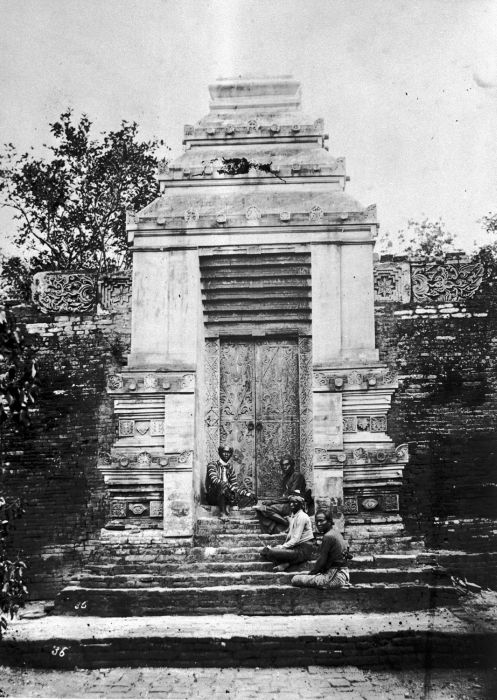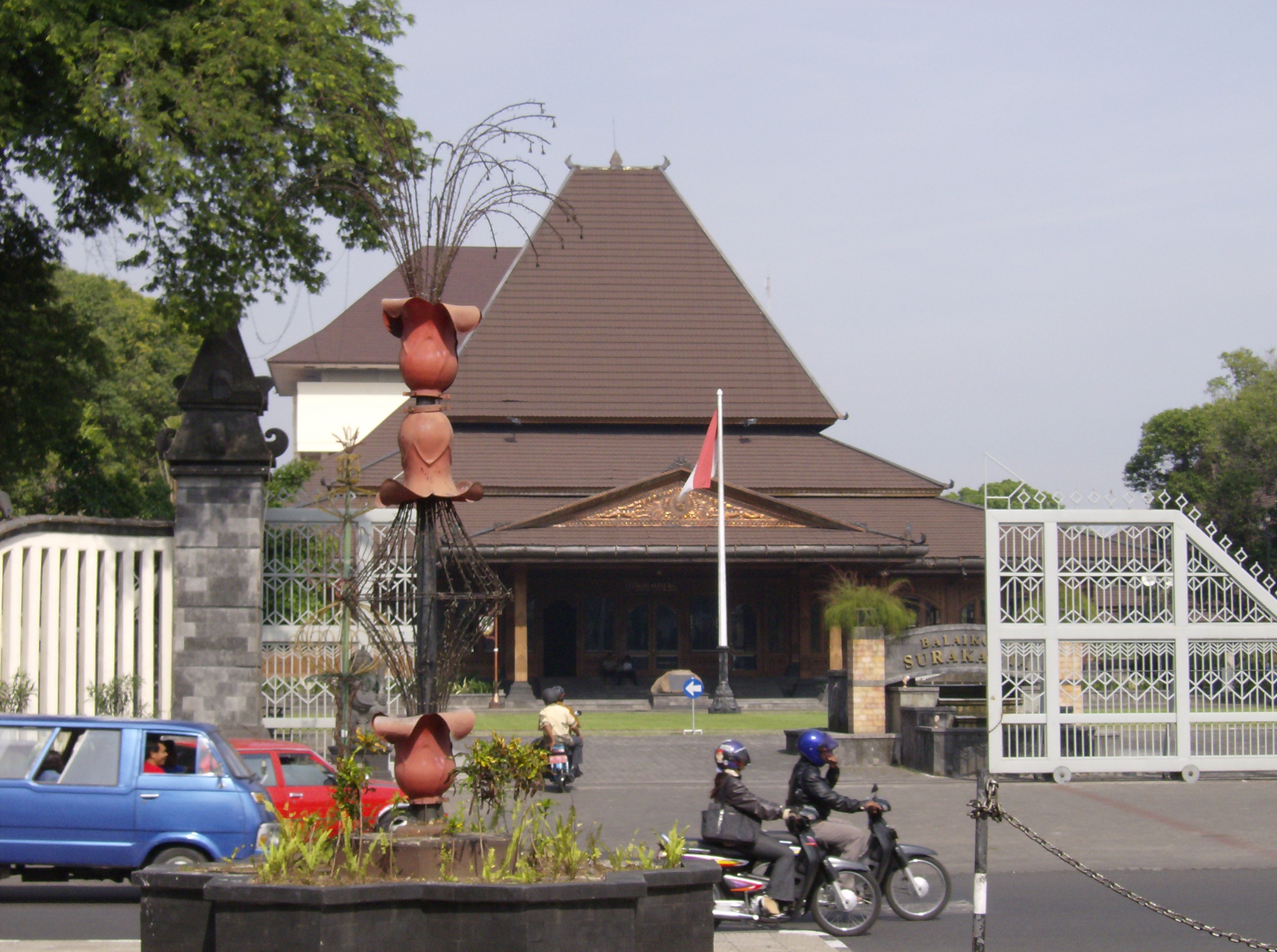|
Senopati
Panembahan Senapati, formally styled Panembahan Senapati ing Ngalaga Sayyidin Panatagama (died in Jenar (now Purwodadi, Purworejo), 1601), was the founder of the Mataram Sultanate. Origin Born Danang Sutawijaya, known as Dananjaya, he was the son of Gedhe Pamanahan, Ki Ageng Pamanahan, a Javanese chief and retainer to Joko Tingkir, who reigned as Hadiwijaya, Sultanate of Pajang, Sultan of Pajang. It was said that Pamanahan was a descendant of the last Majapahit king. Sutawijaya's mother was Nyai Sabinah who, according to Javanese chronicles, was a descendant of Sunan Giri, a member of Walisanga. Nyai Sabinah had a brother, Ki Juru Martani, who was elected as the first ''patih'' (viceregent) of Mataram. He had an important role in arranging strategy to suppress Arya Penangsang's rebellion in 1549. Sutawijaya was adopted by Hadiwijaya as an inducement, because Hadiwijaya and his wife still had no children yet in that time. Hadiwijaya gave him a residence in the north of a market, th ... [...More Info...] [...Related Items...] OR: [Wikipedia] [Google] [Baidu] |
Nyai Roro Kidul
''Kanjeng Ratu Kidul'' Sundanese: ᮑᮤ ᮛᮛ ᮊᮤᮓᮥᮜ᮪, Nyai Rara Kidul) ( Javanese: ꦚꦻꦫꦫꦏꦶꦢꦸꦭ꧀, Nyi Rara Kidul) ( Balinese: ᬜᬶᬭᭀᬭᭀᬓᬶᬤᬸᬮ᭄, Nyi Rara Kidul) is a supernatural being in Indonesian folklore. She is the Queen of the Southern Sea (Indian Ocean) in Sundanese and Javanese mythology. In an older Sundanese folklore, she is a beautiful princess named Dewi Kadita who comes from the Sundanese kingdom of Pajajaran. According to Javanese beliefs, she is also the mythical spiritual consort of the Sultans of Mataram and Yogyakarta, beginning with Senopati and continuing to the present day. Names Nyai Loro Kidul spirit has many different names, which reflect the diverse stories of her origin in different sagas, legends, myths and traditional folklore. The Sundanese folk tale tells of Dewi Kadita, the beautiful daughter of the Sunda Kingdom in Western Java. Other names include Ratu Laut Selatan ("Queen of the Sou ... [...More Info...] [...Related Items...] OR: [Wikipedia] [Google] [Baidu] |
Kotagede
Kotagede (Javanese: ꦏꦸꦛꦒꦼꦝꦺ ''Kuthagedhé'') is a city district (''kemantren'') and a historic neighborhood in Yogyakarta, Special Region of Yogyakarta, Indonesia. Kotagede contains the remains of the first capital of Mataram Sultanate, established in the 16th century. Some of the remains of the old Kotagede are remains of the palace, the royal cemetery, the royal mosque, and defensive walls and moats. Kotagede is well known internationally by its silver crafting. History Royal city and pilgrimages Kotagede was previously a forest named Mentaok, to the east of Gajah Wong River. During the last quarter of the 16th century, the ruler of the Islamic Kingdom of Pajang, about 100 kilometers to the east of this site, awarded the forest to Ki Ageng Pemanahan, one of his courtiers who successfully put down a rebellion. Pemanahan opened the forest with his son Danang Sutawijaya, who was also an adoptive son of the ruler. A settlement was established and was named Mataram as ... [...More Info...] [...Related Items...] OR: [Wikipedia] [Google] [Baidu] |
Mataram Sultanate
The Sultanate of Mataram () was the last major independent Javanese kingdom on the island of Java before it was colonised by the Dutch. It was the dominant political force radiating from the interior of Central Java from the late 16th century until the beginning of the 18th century. Mataram reached its peak of power during the reign of Sultan Agung Anyokrokusumo (), and began to decline after his death in 1645. By the mid-18th century, Mataram lost both power and territory to the Dutch East India Company (Dutch: ''Vereenigde Oost-Indische Compagnie''; ''VOC''). It had become a vassal state of the company by 1749. Etymology The name ''Mataram'' itself was never the official name of any polity, as the Javanese often refer to their realm simply as ''Bhumi Jawa'' or ''Tanah Jawi'' ("Land of Java"). ''Mataram'' refers to the historical areas of plains south of Mount Merapi around present-day Muntilan, Sleman, Yogyakarta, and Prambanan. More precisely, it refers to the Kota ... [...More Info...] [...Related Items...] OR: [Wikipedia] [Google] [Baidu] |
Demak Sultanate
The Demak Sultanate (کسلطانن دمق) was a Javanese Muslim state located on Java's north coast in Indonesia, at the site of the present-day city of Demak. A port fief to the Hindu-Buddhist Majapahit kingdom thought to have been founded in the last quarter of the 15th century, it was influenced by Islam brought by Muslim traders from China, Gujarat, Arabia and also Islamic kingdoms in the region, such as Samudra Pasai, Malacca and Bani (Muslim) Champa. The sultanate was the first Muslim state in Java, and once dominated most of the northern coast of Java and southern Sumatra. Although it lasted only a little more than a century, the sultanate played an important role in the establishment of Islam in Indonesia, especially on Java and neighboring areas. Etymology The origin of Demak was the settlement named Glagah Wangi. According to tradition, the first person that Raden Patah encountered in Glagah Wangi was a woman named Nyai Lembah, from Rawa Pening. Nyai Lembah ... [...More Info...] [...Related Items...] OR: [Wikipedia] [Google] [Baidu] |
Semarang
Semarang ( jv, ꦏꦸꦛꦯꦼꦩꦫꦁ , Pegon: سماراڠ) is the capital and largest city of Central Java province in Indonesia. It was a major port during the Dutch colonial era, and is still an important regional center and port today. The city has been named as the cleanest tourist destination in Southeast Asia by the ASEAN Clean Tourist City Standard (ACTCS) for 2020–2022. It has an area of and is located at . The population of the city was 1,555,984 at the 2010 censusBiro Pusat Statistik, Jakarta, 2011. and 1,653,524 at the 2020 census,Badan Pusat Statistik, Jakarta, 2021. making it Indonesia's ninth most populous city after Jakarta, Surabaya, Bekasi, Bandung, Medan, Depok, Tangerang and Palembang. The built-up urban area had 3,183,516 inhabitants at the 2010 census spread over two cities and 26 districts. The Semarang metropolitan area (a.k.a. ''Kedungsepur'') has a population of over 6 million in 2020 (''see Greater Semarang section''). The population of the ... [...More Info...] [...Related Items...] OR: [Wikipedia] [Google] [Baidu] |
Benawa Of Pajang
Benawa or banawa is a type of ship from Gowa, an old principality in the southwest corner of Sulawesi, Indonesia. The earliest record of this vessel is from Hikayat Banjar, which was written in or not long after 1663. In the present, this vessel is already extinct; being replaced by vessels with a similar hull, namely palari and padewakang. Etymology The word ''benawa'' or ''banawa'' comes from the kawi Javanese language, which means boat or ship. In the old Javanese language the word ''banawa'' means '' perahu'' or ship. In different languages, the word may refer to a different type of vessel, depending on the context of the sentence. Description The benawa was made for transporting horses and buffaloes. The hull is wide with a convex keel, with a high front and back stem and sternpost. On either side, there are paths attached to a number of transverse beams that are attached to the supports. The secondary function of these beams is to divide the deck space into equal compart ... [...More Info...] [...Related Items...] OR: [Wikipedia] [Google] [Baidu] |
Wali Songo
The Wali Songo (also transcribed as Wali Sanga) are revered saints of Islam in Indonesia, especially on the island of Java, because of their historic role in the spread of Islam in Indonesia. The word ''wali'' is Arabic for "trusted one" ("guardian" in other contexts in Indonesia) or "friend of God" ("saint" in this context), while the word ''sanga'' is Javanese for the number nine. Although referred to as a group, there is good evidence that fewer than nine were alive at any given time. Also, there are sources that use the term "Wali Sanga" to refer to saintly mystic(s) other than the most well-known nine individuals. Each man is often attributed the title '' sunan'' in Javanese, which may derive from ''suhun'', in this context meaning "honoured". Most of the wali were also called ''raden'' during their lifetimes, because they were members of royal houses. (See "Style and Title" section of Yogyakarta Sultanate for an explanation of Javanese nobility terms.) The graves of W ... [...More Info...] [...Related Items...] OR: [Wikipedia] [Google] [Baidu] |
Surakarta
Surakarta ( jv, ꦯꦸꦫꦏꦂꦠ), known colloquially as Solo ( jv, ꦱꦭ; ), is a city in Central Java, Indonesia. The 44 km2 (16.2 sq mi) city adjoins Karanganyar Regency and Boyolali Regency to the north, Karanganyar Regency and Sukoharjo Regency to the east and west, and Sukoharjo Regency to the south. On the eastern side of Solo lies Solo River (Bengawan Solo). Its built-up area, consisting of Surakarta City and 59 districts spread over seven regencies ("Greater Solo Area", formerly Special Region of Surakarta), was home to 3,649,254 inhabitants as of 2010 census, around half million of which reside in the city proper. Surakarta is the birthplace of the current President of Indonesia, Joko Widodo. He served as Mayor of Surakarta from 2005 to 2012. History Hominid habitation in the region of Surakarta is evidenced from roughly one million years ago, the age of the "Java Man" skeleton found 80 kilometers upstream. Another famous early hominid from this area is c ... [...More Info...] [...Related Items...] OR: [Wikipedia] [Google] [Baidu] |





